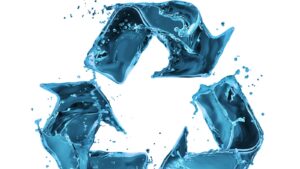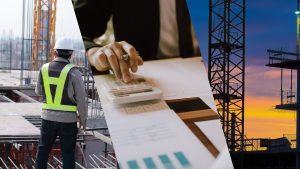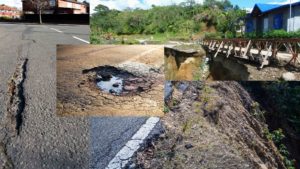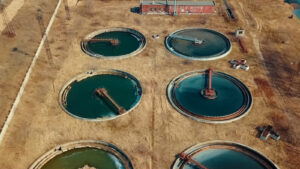As the world is taking on a new path of awareness, it is unjustifiable if we do not speak on how the usable percentage of water on Earth is gradually depleting and, in this digital age, where every problem has a solution, and technology, being the cornerstone of most of the developing industries, has provided a wide range of solutions on how we humans could utilise the hydro-services, but most of these solutions have been seen as a threat to the “old ways” of utilising water facilities, for instance, old dams or reservoirs were built in a way where the water that comes in, stays in, and when needed, through the gates, were sent out. There were no automated cleaning stations or hydropower stations. Instead, you will find a lush ecosystem with a variety of aquatic life forms and plants. The more technology is used in the water utility service sectors, the more functions will be created to protect the environment, supply clean water for people and animals, and as a mode of transportation and energy generation. All of this will be accomplished more effectively and with less environmental impact thanks to technological advancements.
What Can Technology Be Used For In Modern Water Utility Service Enablers?
Technology is used for and will be used in the future as well, for almost everything in the water utilising industry, below are a few but vital factors where technology will be used in general;
• During infrastructural operations, the conversing and recovery of energy, as well as nutrients, will be done by technology.
• Despite the ever-changing environment and the shifting climate changes, technology will ensure a dynamic and steadfast resilience of the infrastructure.
• The water qualities of oceans, watersheds, and estuaries differ from each other, therefore to improve the quality of it, technology will be used.
•The greening of water infrastructure, or the environmental-friendly factor will be emphasised.
• By using “smart water monitoring” the risks and damage costs will be greatly reduced.
• The impact between water and energy production will be controlled.
• Giving a boost or upgrading systems of water utilisation to better fit the new trends of water utilisation.
• Encouraging the re-use of water.
• Making it safer for humans to consume water while bringing up its standards.
• Despite the ever-changing environment and the shifting climate changes, technology will ensure a dynamic and steadfast resilience of the infrastructure.
• The water qualities of oceans, watersheds, and estuaries differ from each other, therefore to improve the quality of it, technology will be used.
•The greening of water infrastructure, or the environmental-friendly factor will be emphasised.
• By using “smart water monitoring” the risks and damage costs will be greatly reduced.
• The impact between water and energy production will be controlled.
• Giving a boost or upgrading systems of water utilisation to better fit the new trends of water utilisation.
• Encouraging the re-use of water.
• Making it safer for humans to consume water while bringing up its standards.
What Are The Most Popular Seven Technologies That Are Used By Water Utility Service Enablers?
Not that we know about what technology and water utilising is and in which ways technology will be used for utilising water, let’s dive into the popular technologies used in utilising water;
CCTV Infrastructure Inspection Fleets And Laser Technology
Closed Circuit Television, also known as CCTV, is used to inspect and diagnose the health of water-based infrastructures such as sewers, dams, and pipelines. The structural conditions and the maintenance statuses are all inspected, graded in a manner of priorities, and displayed on a maintenance tab. The reason for such equipment is because of the wide network of pipelines that forms a complex yet ‘impossible to inspect with the human mind’ infrastructure. Therefore, CCTV inspection is used to fleet the pipelines and report back any damages, blockages or other technical malfunctions.
3D laser sensor technologies have helped substantially in refining the road crack and rut measuring technologies through sensor-based pavement inspection. This method may be used in any form of the road (hot mix asphalt, porous pavement, normal concrete, tined concrete or more) (hot mix asphalt, porous pavement, standard concrete, tined concrete or more). It optimises data on cracks and ravelling in order to provide appropriate data for examining the status of road assets over the next ten years. It not only detects fractures, but also understands the kind of damage based on the shape, length, height, and width of the affected zone, allowing transportation assets to manage the ultimate tool for analysing road conditions. For a more rapid technical application, this technology may be integrated into mobile devices or cars in conjunction with CCTV technologies.
3D laser sensor technologies have helped substantially in refining the road crack and rut measuring technologies through sensor-based pavement inspection. This method may be used in any form of the road (hot mix asphalt, porous pavement, normal concrete, tined concrete or more) (hot mix asphalt, porous pavement, standard concrete, tined concrete or more). It optimises data on cracks and ravelling in order to provide appropriate data for examining the status of road assets over the next ten years. It not only detects fractures, but also understands the kind of damage based on the shape, length, height, and width of the affected zone, allowing transportation assets to manage the ultimate tool for analysing road conditions. For a more rapid technical application, this technology may be integrated into mobile devices or cars in conjunction with CCTV technologies.
Big Data Technologies
Increasingly sophisticated sensors will be available to water utilities as we go into the age of Big Data and the Internet of Things (IoT). These sensors will be able to detect changes in infrastructure performance that were previously invisible. These predictive technologies will assist organisations in anticipating equipment failures and leaks, as well as in developing a plan for how to replace capital equipment in the most cost-effective manner.
Mostly compiled with data standardisation tools, security protocols, and integration platforms plus, a plethora of utility functions, big data technologies will ensure a smooth flow of health maintenance in water infrastructure as well as its sustainability and the resilience of it.
Mostly compiled with data standardisation tools, security protocols, and integration platforms plus, a plethora of utility functions, big data technologies will ensure a smooth flow of health maintenance in water infrastructure as well as its sustainability and the resilience of it.
Emerging Satellite Technology
New technologies that handle forecasting and modeling, as well as scenario building to map implications, may make it possible to improve the evaluation of risk factors in the future. This, in turn, has the potential to enhance risk mitigation planning. Technologies such as Earth observation, telecommunications and information technology combined with information and communication technologies, have the potential to significantly improve the monitoring of water issues and the response to threats on a daily basis in the near to medium term. Earth observation satellite data might be used to increase understanding of freshwater availability and distribution, as well as to aid in the management of water delivery to water consumers. More precisely, satellite photos allow for widespread and efficient monitoring of reservoir water levels, allowing for early warning of water shortages as well as consistent data across many nations that share water resources, hence boosting openness and uniformity in water supply.
Water utility service providers could use satellite-based SAR (Synthetic Aperture Data) to analyse the data obtained using algorithms in order to foresee or forecast any harm that may occur in the future. Due to the effect of artificial intelligence (AI) analytics on this technology, any issues that develop will have a speedy remedy.
Water utility service providers could use satellite-based SAR (Synthetic Aperture Data) to analyse the data obtained using algorithms in order to foresee or forecast any harm that may occur in the future. Due to the effect of artificial intelligence (AI) analytics on this technology, any issues that develop will have a speedy remedy.
IoT Sensor Networks
IoT sensor Networks are also known as IoT-powered nanosensor networks, these systems are used to facilitate the cost of water utility ruptures in the infrastructure. This technology is a part of Big Data Technology. The sensors gather data such as water quality and leakage status and feed it to an AMI (Advanced Metering Infrastructure). Therefore, by depending on the various data provided, the IoT-powered sensor allows the asset to calibrate water and hydraulic models with District Metered Areas (DMAs), active leak detection, and more.
Predictive And Perspective Analytics
Powered by AI and ML models, the actions of predicting possible ruptures in the pipelines as well as the stats on the water distribution and utility of the near future can be easily predicted. Vital data stats such as the performance of each line will also be shown by the AI algorithm and will provide solutions accordingly.
Scalable GIS Mapping
This tool is used to map the infrastructure of pipelines across a radius of 25,000 km and to 250,000 residences/offices. These mapping tools will show where the pipelines have not been properly fixed, or have been blocked and will run smooth. Not only diagnosing but also predicting the future results of water usage will be shown as well.
With every turn a pipe takes, technology takes one step towards forming a better, effective, efficient way of sustaining, distributing, and utilising water facilities across millions of houses. With state-of-the-art programs, we could learn to re-use the water we have and create a safer future for our world.
With every turn a pipe takes, technology takes one step towards forming a better, effective, efficient way of sustaining, distributing, and utilising water facilities across millions of houses. With state-of-the-art programs, we could learn to re-use the water we have and create a safer future for our world.
The importance of Using Future of Water Utility Service
The water industry seems to be headed in the right direction for the time being. Utility executives must have a strong understanding of their organisation’s aims and strategic objectives in order to make the most of their technological investments. It is necessary for utilities to align their goals with the best available supporting technology, while prioritising deployment and changing business procedures.







